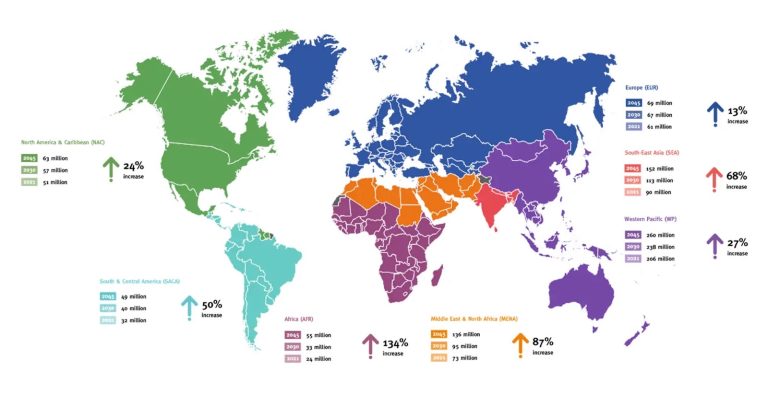Diabetes is one of the world’s biggest health problems, an illness that doesn’t have a cure. You can live with diabetes as long as you have the condition diagnosed as early as possible — and as long as you have access to the treatment options that are currently available. That includes access to insulin, a key treatment for managing blood sugar.
Getting rid of diabetes is currently impossible, but there’s ongoing research to find a cure. The latest development comes from China, where doctors in Shanghai say they have successfully cured type 2 diabetes in a 59-year-old patient. The researchers used stem cells from the patient’s blood to kickstart the pancreas into producing its own insulin.
After 11 weeks, the patient was taken off insulin, and then the other oral drugs for diabetes management were gradually reduced. Some 33 months later, his pancreas continues to produce insulin on its own.
Type 2 diabetes is the acquired kind, and it doesn’t always require insulin therapy. It’s also the most prevalent kind of the two. Type 1 diabetes is the one you’re born with, and it’s insulin-dependent.
Diabetes can lead to all sorts of complications, especially if mismanaged or untreated. The illness can impact other organs like the heart and kidneys. The 59-year-old patient in the study had a 25-year history of type 2 diabetes. The man developed end-stage diabetic nephropathy, a kidney issue that required a kidney transplant in June 2017.
A couple of years later, he developed poor blood sugar control. This, combined with the risk associated with the kidney transplant, convinced the doctors to pursue the stem cell treatment option.
The researchers derived stem cells from the patient’s blood, transforming them into pancreatic islet cells, which handle insulin production. They transplanted the resulting cells into the patient’s pancreas, which then formed new pancreatic tissue capable of producing insulin.
The procedure was successful, and the new pancreatic tissue started making insulin. After 11 weeks, the patient stopped administering external insulin, a sign that the transplanted stem cells were working as intended.
The following year, the doctors also lowered the dose of oral diabetes medication that helped the patient keep blood sugar under control. They ended up stopping oral treatment entirely.
As of May 2024, the patient remains insulin-independent some 33 months after the stem cell transplant. This effectively means his type 2 diabetes has been cured.
However, the patient will probably continue to be observed for years to ensure the pancreas functions correctly.
As someone who has family members with diabetes, I’ve long been interested in ways to monitor the condition and ensure proper management.
That’s why I’m looking forward to seeing companies like Apple and Samsung develop noninvasive ways of measuring blood sugar using wearable devices like the Apple Watch and Galaxy Watch. Such tech breakthroughs would help with the early detection of diabetes risk and management of treatment after diagnosis.

As seen in the International Diabetes Federation projections above, the number of diabetes cases around the world is bound to grow significantly in the coming years, especially without a cure in place. Some 537 million adults live with diabetes currently, with the figure to rise to 783 million by 2045.
The more efficient the treatment, the better the patient’s overall health will be. Hopefully, in time, more people could benefit from a cure similar to the one the Shanghai researchers devised.
As impressive as the stem cell breakthrough is, more research is needed to determine whether this diabetes cure can be replicated at scale. Also, additional research is required to test a similar stem cell therapy for type 1 diabetes. Again, that’s the type of diabetes that requires insulin from an early age. You’ll find the full study at this link.
As NextShark points out, this isn’t the only test involving stem cell therapy for curing diabetes. Last year, the US Food and Drug Administration (FDA) approved a similar treatment from a Chicago-based company for type 1 diabetes.








